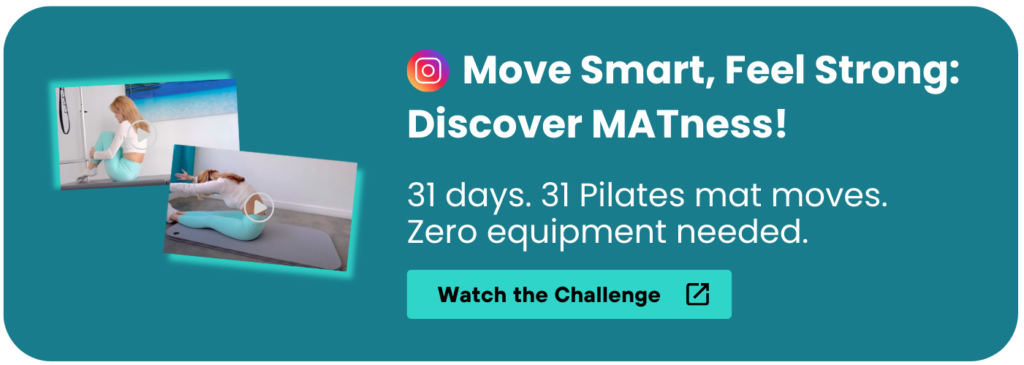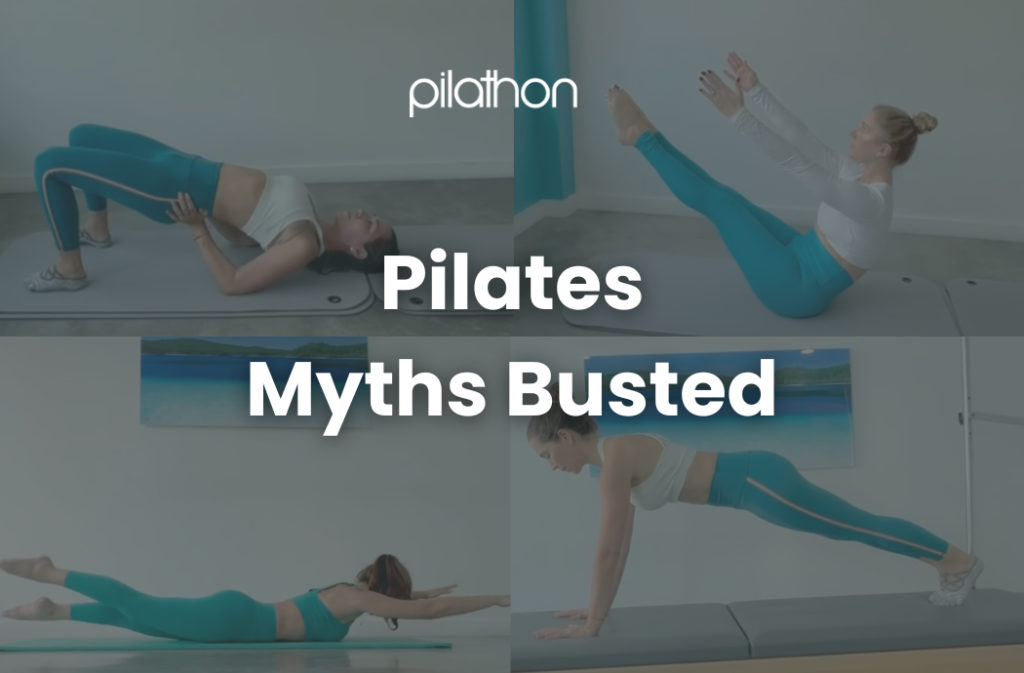Pilates has exploded in popularity over the last decade—and for good reason. It builds core strength, improves posture, enhances flexibility, and brings a much-needed sense of calm and control into our busy lives.
But with the rise of trendy studio classes, Instagram-friendly poses, and “Pilates-inspired” workouts popping up everywhere, the heart of the method is often misunderstood—or completely lost.
Many people still believe Pilates is only for super-flexible dancers or that it only “counts” if you’re on a sleek Reformer in a luxury studio. Others assume it’s just fancy stretching, or worse—too slow to be effective.
So let’s set the record straight.
Pilates is for every body. It’s for athletes, beginners, seniors, people in pain, people who sit at a desk all day, and people who want to move better in life—not just in the gym.
And yes, when done right, Pilates is incredibly effective. It’s not a trend—it’s a method. A system. A lifelong tool for building strength, control, and body awareness in a sustainable way.
Let’s roll out the mat, clear up the confusion, and bust some of the biggest myths that might be holding you back from experiencing everything Pilates truly has to offer.
Contents on this article
Myth #1: Pilates is Only for Flexible People
We hear this one a lot: “I can’t do Pilates—I’m not flexible enough.”
Let’s clear that up right away: you don’t need to be flexible to start Pilates. Flexibility isn’t a prerequisite—it’s a result. Pilates helps you become more mobile by improving joint health, releasing tension, and building strength through your full range of motion.
In fact, if you’re tight, stiff, or recovering from years of sitting at a desk (hello, 21st-century life), Pilates might be exactly what your body is asking for.
And no—you won’t be expected to fold into pretzel shapes or touch your toes on day one. At Pilathon, we meet you exactly where you are. Whether you can barely reach your shins or already have dancer-level flexibility, we’ll guide you with intention, safety, and care.
The goal? To move through life with more ease, confidence, and grace—not to win a flexibility contest. Pilates isn’t about being bendy—it’s about being balanced, strong, and connected.
Myth #2: You Need Fancy Machines to Do “Real” Pilates
We’ll be the first to say it: we love the Reformer, the Cadillac, the Chair, and all the beautifully designed equipment Joseph Pilates created. These tools are incredible for adding resistance, offering support, and helping clients explore movement in new ways.
But let’s get one thing straight—Pilates didn’t start with the equipment. It started with the mat.
Joseph Pilates originally developed his method as a mat-based practice, using nothing more than bodyweight, gravity, and breath. The equipment came later, as a way to support or intensify the matwork—not replace it.
And this is where a lot of modern studios (and social media content) can mislead people. When you only see fancy machines, it’s easy to assume that’s where the “real” Pilates happens. But in truth, the mat is the foundation of the entire system.At Pilathon, we’re proud to bring mat Pilates back into the spotlight. That’s why we launched March MATness on Instagram—our 31-day challenge where we guide you through 31 original mat exercises straight from Joseph Pilates’ repertoire. No machines, no filters—just pure, intelligent movement.

You can follow along with zero equipment (yep, even a towel instead of a mat works in a pinch), and everything is saved in our Stories Highlights so you can move at your own pace.
Because at the end of the day, Pilates isn’t about the gear—it’s about the method. And the method works, no matter where you’re practicing.
Myth #3: Pilates is Just Stretching
We understand where this myth comes from—Pilates movements often look smooth, graceful, and effortless. But don’t let the elegance fool you. Behind that controlled flow is a highly strategic strength-based workout designed to build deep, functional strength.
Yes, your flexibility will absolutely improve—but that’s not the whole story.
Pilates targets the deep stabilizing muscles of your core (think way beyond just abs), as well as muscles that support your spine, hips, and shoulders. These are the same muscles that help you stand upright, lift with ease, and move through life with less effort and more energy.
It’s not just about stretching—it’s about strengthening and integrating.
You’ll discover muscles you didn’t even know you had (hello, inner thighs and tiny glute stabilizers 👋), and you’ll feel stronger in everyday tasks like:
- Lifting groceries
- Climbing stairs
- Sitting at your desk without slumping halfway through the day
- Holding your body with awareness and ease
And the best part? It’s all done without pounding your joints or pushing your body to exhaustion.
So no, Pilates is not just stretching. It’s a thoughtfully designed system that builds strength, control, and mobility.
Myth #4: Pilates Isn’t Challenging Enough to Be Effective
Pilates is low-impact—and we love it for that. It’s kind to your joints, gentle on recovery days, and safe for people at all fitness levels.
But don’t confuse low-impact with low-intensity.
When practiced correctly, Pilates is intensely challenging—not because it exhausts you, but because it demands control, precision, and presence.
Every movement asks you to stabilize your core, activate tiny supporting muscles, and move with full-body awareness.
There are no shortcuts.
There’s no “just powering through.”
It’s not about quantity—it’s about quality.
And if you think it’s too easy, we invite you to hold The Teaser for 30 seconds and then let us know how your abs feel. (Spoiler alert: they’ll feel everything.)
Pilates challenges you to slow down, go deeper, and refine your movement. It builds strength from the inside out, making your body more resilient, more efficient, and more balanced.
So if you’re looking for a challenge that’s not about burnout, but about sustainable, long-term strength—Pilates is it.
Myth #5: Pilates Is Only For Women
Let’s just go ahead and file this one under: completely outdated.
The idea that Pilates is only for women is not only false—it’s historically inaccurate. Joseph Pilates, the founder of the method, was a boxer, gymnast, wrestler, and self-defense trainer.
He created his system to strengthen the whole body from the inside out—originally for injured soldiers and athletes recovering from trauma and physical strain.
His earliest students? A mix of men and women. Fighters, dancers, soldiers, artists—people who wanted to move better and live stronger.
So where did the “Pilates is for women” myth come from? Most likely from the early adoption of Pilates in the dance world, where it became a beloved practice among ballerinas and performers.
And yes—many women fell in love with the method because it emphasizes intelligent movement over brute force, and delivers real results without the joint-pounding wear and tear.
But here’s the truth: Pilates works for all humans with muscles, joints, lungs, and a nervous system. Which is… all of us.
At Pilathon, we see every kind of person on the mat. Pilates doesn’t care what gender you are—it just wants you to move well, breathe deeply, and feel good in your body.
Final Thoughts: Pilates is for You—Yes, You!
At Pilathon, we believe Pilates is for everybody and every body.
You don’t need to be:
- Flexible
- Rich
- Young
- Wearing the perfect matching set
You just need:
- An open mind
- A curious spirit
- And a little space to move
Whether you’re in the Wynwood or Little River studio sweating it out on a Reformer, or at home following along with our MATness challenge, you’re practicing real Pilates.
And guess what? It’s real effective.
Let’s bust the myths. Let’s ditch the noise. Let’s roll out the mat and reconnect with what this method is really about:
Control. Curiosity. Connection. Strength that lasts. And true joy in movement.

